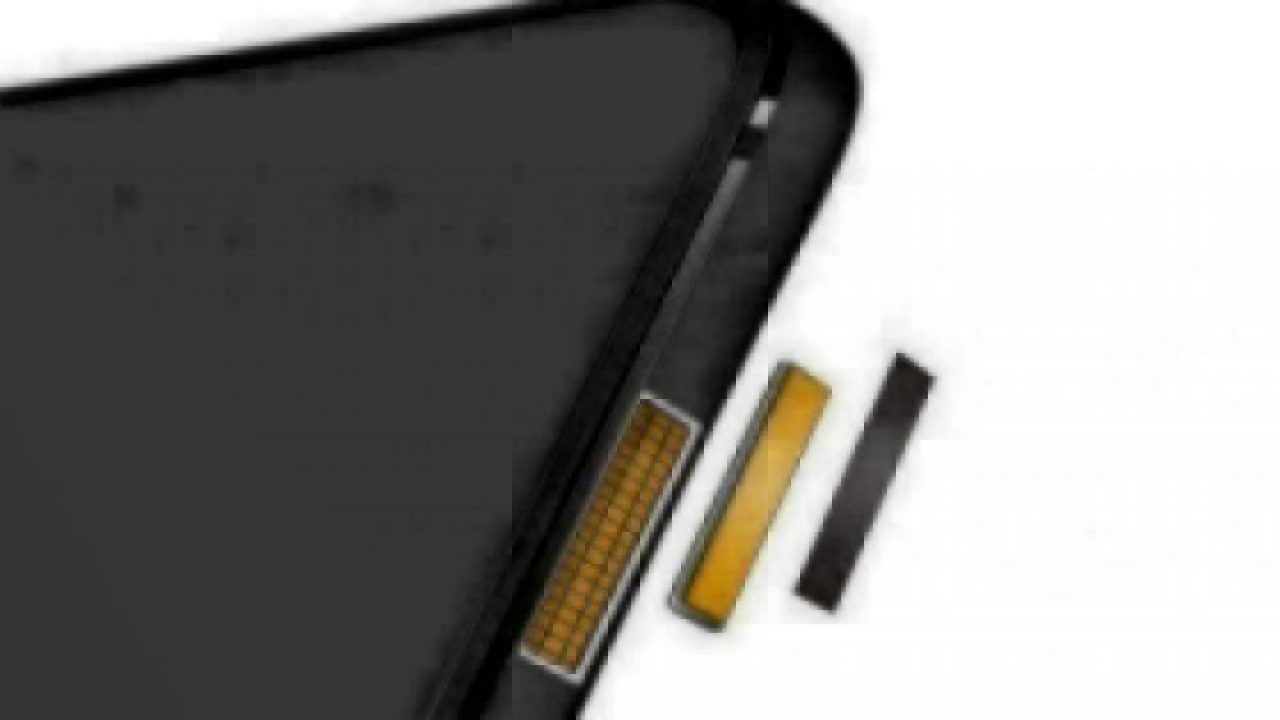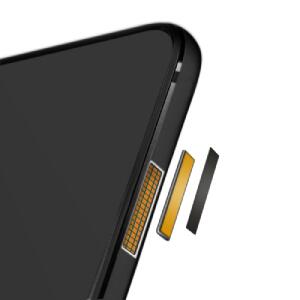Xiaomi to Use Fingerprints’ Side-mounted Sensor
Article By : Anne-Françoise Pelé

First to develop fingerprint touch sensors on Android, Fingerprint Cards AB (Fingerprints) announces slim side-mounted fingerprint sensors for borderless and foldable smartphones.
After weeks of teasing and speculation, Chinese smartphone manufacturer Xiaomi Corp. unveiled Tuesday the much-awaited successor to Redmi K20, the Redmi K30 5G smartphone. It is the first one to integrate Fingerprints’ new biometric sensor.
Swedish firm Fingerprint Cards AB (Fingerprints) has just rolled out the FPC1540 slim side-mounted capacitive touch sensor for biometric authentication. Placed on the side of Xiaomi’s Redmi K30 smartphone inside the power button, the sensor is also suitable for the latest smartphone designs, including borderless and foldable phones.
Ultra-slim
The era of foldable phones is upon us. Market research firm ABI Research has predicted that smartphone shipments of smartphones with some type of foldable, flexible, or rollable display will take off as early as 2020, with growth to hit 228 million in 2028. The total number of devices with the technology is expected to rise from 1.8 million in 2019 to 240 million in 2028, at a CAGR of 72 percent.

(Image: Fingerprints)
The FPC1540 sensor, Fingerprints claimed, is an ultra-slim, elongated form factor (2.4 mm ‘slim’ x 11.0 mm ‘tall’) to feature on the sides of smartphones and fit in foldable and slim devices. Size reduction is indeed its biggest improvement compared with previous versions, said Ted Hansson, senior vice-president Business Line Mobile at Fingerprints. “In the latest foldable phones, where there is no space to place fingerprints sensors on the front or back of devices, this is perfect. The space limitation is also true for the first generation of 5G phones as they have significantly higher power consumption and require larger batteries. Under display and rear-mounted, fingerprint sensors reduce battery space, making side mounting a perfect solution for these phones.”
The FPC1540 sensor does not require a metallic border, known as bezel, and is covered with a spray coating that is fully customizable to match the color of the device. “Sensors blend seamlessly into the phone, meaning OEMs don’t have to compromise on design to deliver biometric security,” Hansson said.
Edgeless, borderless, bezel-less: Xiaomi first unveiled the bezel-less concept with its Mi Mix phones back in 2016. Today, almost all OEMs have launched at least one bezel-less smartphone into the market, and the trend is here to stay. For those wanting to have a full, borderless display, Hansson said, “a sensor on the side is a brilliant alternative that is notably cheaper.”
Commenting on price and complexity reduction, Hansson said fewer components are needed, meaning it is both “cost efficient and simpler” to integrate. “Plus, by offering multi-functionality, the sensor removes the need for additional buttons.”
Supplying eight out of 10 OEMs
Biometric authentication has come a long way in recent years. Integrated in the first Android smartphone almost five years ago, fingerprint touch sensors are progressively overtaking PIN as consumers’ preferred authentication method. According to ABI Research, the consumer market is expected to reach approximately 1.26 billion fingerprint sensor shipments by the end of 2019.

Ted Hansson, Fingerprints
In May 2019, Fingerprints announced it had shipped 1 billion biometric sensors worldwide, “supplying over 400 different mobile device models, in 8 of the 10 smartphones OEMs,” said Hansson. The company claimed its commitment to R&D has been central to this achievement. “Our active capacitive touch sensors, combined with advanced in-house software and algorithms, have enabled us to reach the sweet-spot between capturing the best image with the smallest sensor, in the fastest time, using the lowest power. This has enabled us to reduce the size and cost of our sensors.”
In parallel, Fingerprints claims it has maintained a strong level of biometric performance and security. “From enabling users to touch at any angle and enroll with only a few touches, to minimizing false rejection and crucially, nearly eliminating the chance of false acceptance: our advanced software does the work, so consumers benefit from the best UX.”
2020 in sight
With fingerprints broadly used in smartphones, and about 70 percent of all devices shipped now including biometrics, Fingerprints predicts the growth of multi-modality solutions. “This would combine the familiarity of fingerprint with other biometric identifiers, such as face and iris, to enable users to authenticate at their convenience, in a range of environments, all with enhanced security.” As an example, the company’s recently-launched Touchless 2.0 combines iris with facial recognition.
In the smartphone industry, biometrics are increasingly serving device makers’ needs for borderless, buttonless, notched designs, Hansson said. The launch of the FP1540 slim side-mounted sensor is one illustration, alongside the under-display trend. “This places the sensor under the display, and this is something Fingerprints is working on currently, using optical technology.”
Biometric technology adoption does not stop with mobile phones and progressively expands in other verticals, including payments and access control. “The possibilities are endless,” Hansson concluded. “Increasing use cases are emerging for biometrics in a bid to remove the PINs and passwords consumers face when accessing both their physical and digital lives.”
Subscribe to Newsletter
Test Qr code text s ss


